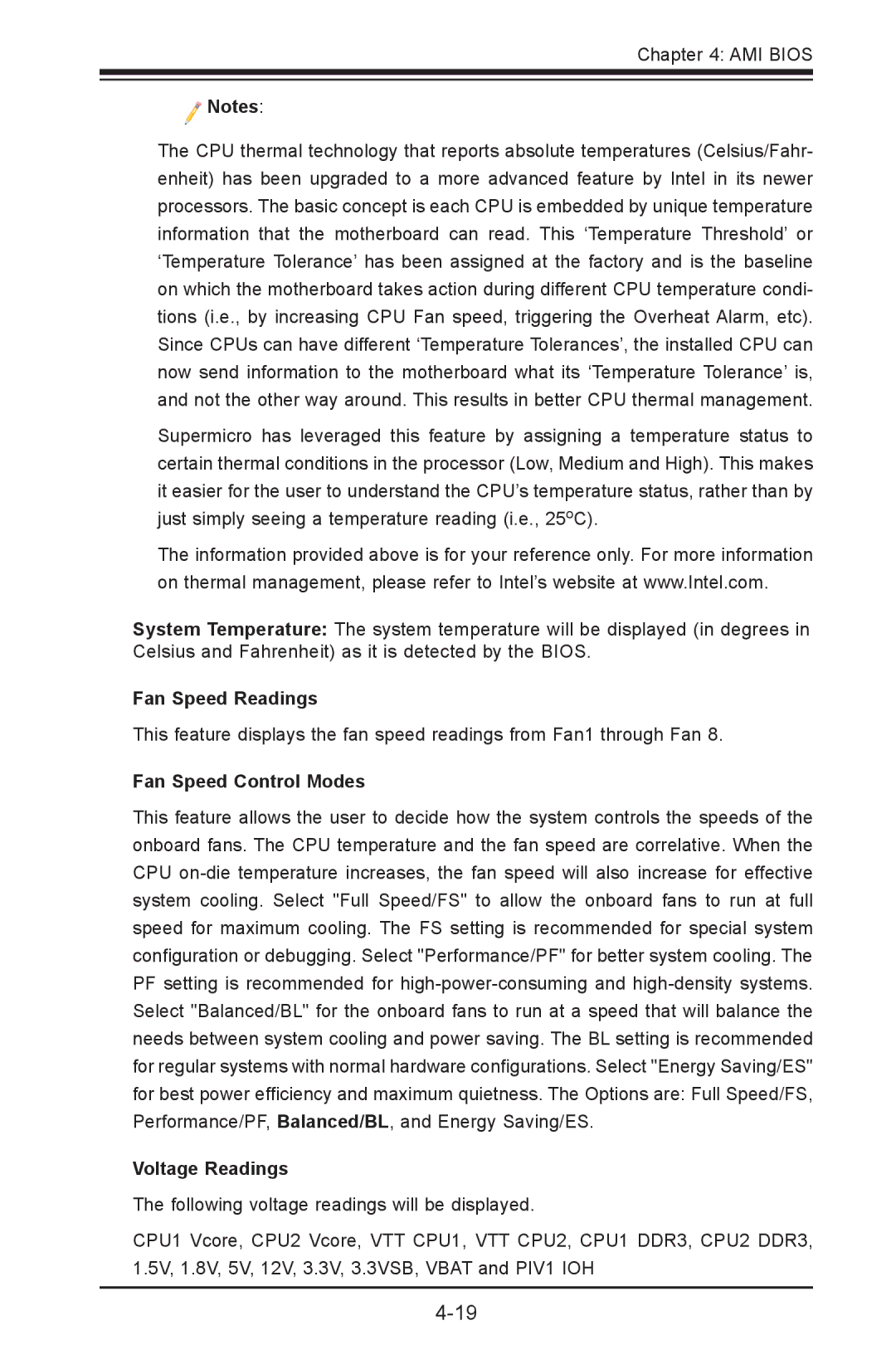
Chapter 4: AMI BIOS
![]() Notes:
Notes:
The CPU thermal technology that reports absolute temperatures (Celsius/Fahr- enheit) has been upgraded to a more advanced feature by Intel in its newer processors. The basic concept is each CPU is embedded by unique temperature information that the motherboard can read. This ‘Temperature Threshold’ or ‘Temperature Tolerance’ has been assigned at the factory and is the baseline on which the motherboard takes action during different CPU temperature condi- tions (i.e., by increasing CPU Fan speed, triggering the Overheat Alarm, etc). Since CPUs can have different ‘Temperature Tolerances’, the installed CPU can now send information to the motherboard what its ‘Temperature Tolerance’ is, and not the other way around. This results in better CPU thermal management.
Supermicro has leveraged this feature by assigning a temperature status to certain thermal conditions in the processor (Low, Medium and High). This makes it easier for the user to understand the CPU’s temperature status, rather than by just simply seeing a temperature reading (i.e., 25oC).
The information provided above is for your reference only. For more information on thermal management, please refer to Intel’s website at www.Intel.com.
System Temperature: The system temperature will be displayed (in degrees in Celsius and Fahrenheit) as it is detected by the BIOS.
Fan Speed Readings
This feature displays the fan speed readings from Fan1 through Fan 8.
Fan Speed Control Modes
This feature allows the user to decide how the system controls the speeds of the onboard fans. The CPU temperature and the fan speed are correlative. When the CPU
Voltage Readings
The following voltage readings will be displayed.
CPU1 Vcore, CPU2 Vcore, VTT CPU1, VTT CPU2, CPU1 DDR3, CPU2 DDR3, 1.5V, 1.8V, 5V, 12V, 3.3V, 3.3VSB, VBAT and PIV1 IOH
